#ashkenazi Jews
Explore tagged Tumblr posts
Text
I can kind of help with Scandinavia, though it's a very flimsy defence. For centuries - I think up until the 19th Century in Sweden - Jews were prohibited from entering most parts of Scandinavia. I think Norwegia did change that earlier, though.
Also, apparently Kochin Jews don't exist anymore, Italkim are secretly Eastern-European Ashkenazim, Sepharadim only come from these specific detailed areas and none of them arrived at the Middle East or Italy after the Alhambra Decree. The part about some Russian Jews being Mizraḥi is clearly an attempt at including Bucharans in a theoretically accurate division, Yemenites are no different from Mizrahim and Ethiopians are Sepharadim.
I suppose all that could be reasoned as enormous oversimplifications. Kudos for calling Romaniote Jews Mizrahim and not Ashkenazim, though, I suppose. Also, didn't know France was East Europe.
Oh, wait, I see Spot the Antisemitism already pointed out the Ethiopian Jews thing.
I mean, it doesn't showcase great familiarity with the various ‘Edot, but to be fair - lines need to be drawn somewhere. You can't dive into every nuance - I mean, when was the last time you were required to know the difference between a Galician Jew and a Polish one? Obviously, hard geographical lines are less useful than one might think, but they're an option.




Shanda who makes tokenism their entire online brand
90 notes
·
View notes
Text
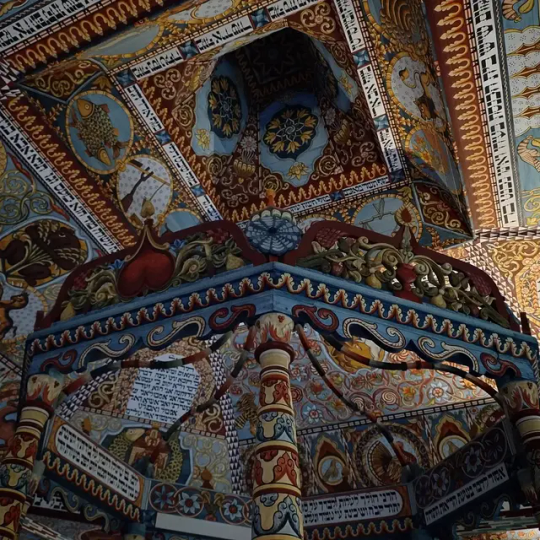
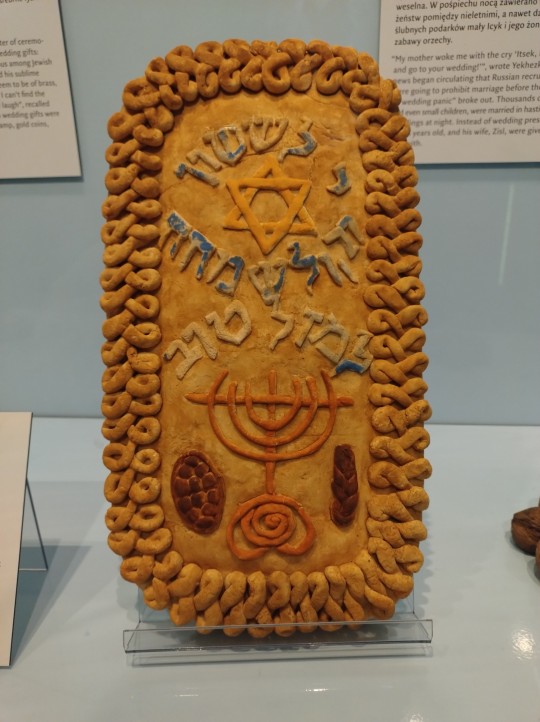
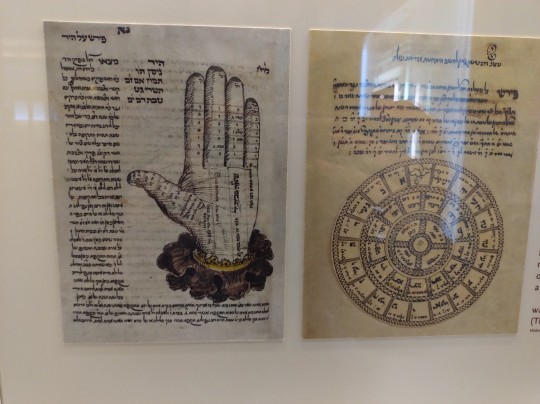
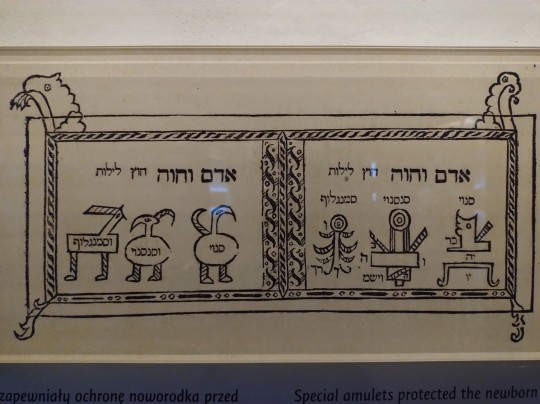
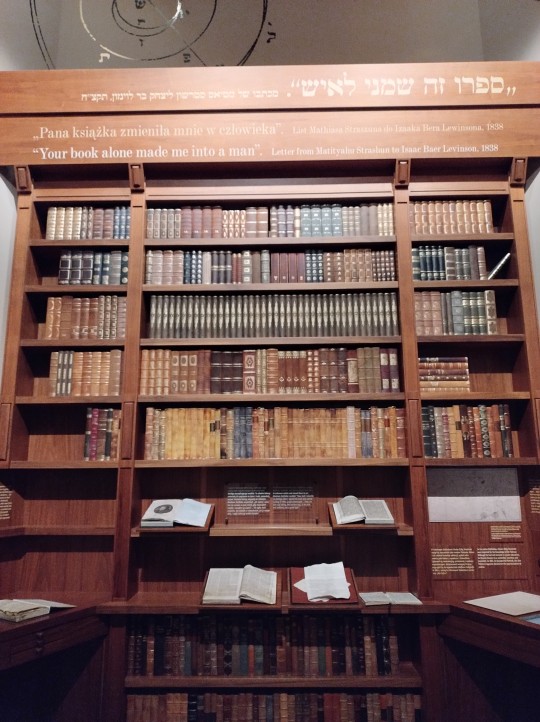
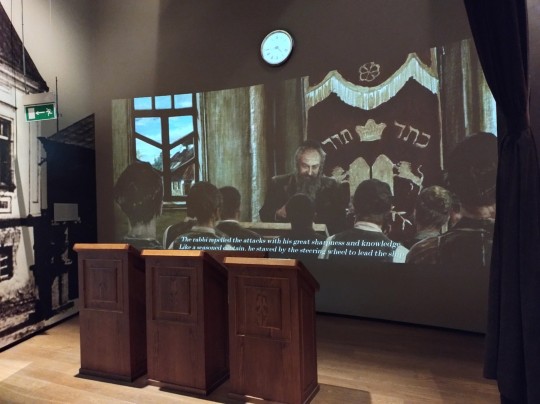

Polin museum of the History of Polish Jews, Warsaw, Poland
It's a great place, very worth seeing
#jidysz#jewish culture#jews in poland#yiddish culture#jewish history#jewish#jews#ashkenazi culture#ashkenazi jews#ashkenazi#synagogue#jeshiva#kabala#jewish amulet#jewish talisman#canopy#jewish wedding#polin#polin museum#warsaw#poland#polish jews#jewish museum
1K notes
·
View notes
Text
I can see why so many Ashkenazim resist being labeled as white.
Europe circa 1000-1945 CE: The Hebrews infesting our land are Oriental interlopers and always will be, so they should go back to the Middle East where they came from! Ashkenazim: But... we've been here for so long. We're good citizens. We contribute to the economy and culture... Europe: Bless your heart. Here, have a pogrom. You know what? Have another pogrom. As a matter of fact, I'm feeling generous. All the Jews get pogroms! You get a pogrom! And you get a pogrom! And you get a pogrom! Ashkenazim: (groan) Europe: There's a special prize under your seat. Look and see what it is! Tell everybody what it is. Ashkenazim: (sigh) An expulsion. Again. Europe circa 1967: Hey, Jews? How are ya? We've been thinking... since Israel's been doing such a good job helping us out by bombing our Arab enemies so that we don't have to do it, you get to be white like us! Isn't that nice? Ashkenazim: You've got to be kidding me. Europe: Is this about the Holocaust? Are you still sore about that? Look, we're sorry, OK? Ashkenazim: It wasn't just the Holocaust. It was all the stuff leading up to — Europe: Jeez! You people are always holding grudges. You need to let it go.
355 notes
·
View notes
Note
I know Ashkenormativity is a thing but lately it feels like that is reversing because I’m seeing Ashkenazi Jews constantly demonized and their histories erased and especially the fact that being Ashkenazi is NOT code for “white European and oppressor.” like the hatred towards Ashkenazi Jews veiled as antiracism is actually still really vile antisemitism. people need to understand that those lenses can’t be applied to Jews in the American/Eurocentric way people are trying to define us. a Jew is a Jew and Jewish identity isn’t dictated by skin color or where we fled in the diaspora, and hating any group of us affects all of us for the worse.
↑↑↑
571 notes
·
View notes
Text
by Ilan Goodman
A favorite tactic of antisemites through the ages is to divide and conquer by separating the Jewish community into two groups. The first faction will be the so-called “good Jews”, those Jews whose values, behavior, or actions can somehow be linked with the larger gentile community. These Jews are held up as examples of loyal citizens indistinguishable from their neighbors.
By contrast, the second and much larger group comprises the “problematic Jews”. It’s these Jews the antisemites insist, who are the real problem. Not only are these deviants against the gentile state the antisemites assert, they are even against their fellow Jews.
Such a division can be remarkably successful. The group designated as the approved group will be so grateful, not only to find acceptance but to escape the wrath coming to their brethren, that they will gratefully support allegations levied against their fellow Jews, somtimes even being the first on the attack. To prove their loyalty and to confirm that they are “the good ones” they might be even more vicious in attacking their fellow Jews than the gentile instigators.
As a result, Jews do the antisemites’ work for them, weakening the Jewish world by their very separation, and then further delegitimizing the ousted community, therefore making it easier to justify future assaults. They justify their behavior by rationalizing that they have more in common with the oppressors than with their fellow Jews, and thus it’s with the oppressors that their loyalties lie.
By the time they realize the truth, that they have been nothing but useful idiots, it is already too late. In the end they learn that to their persecutors, a Jew is always, and nothing but, a Jew.
Like all things antisemitic, this ploy morphs and takes on new forms to fit the times and situation. Today, when the Jewish world is at war with the Arab world, it has once again mutated. In the modern interpretation, the refrain goes that the Jewish world can again be separated into two types of Jews.
The first are the Mizrachi Jews. These are Jews who hail most recently from Arab countries, mainly in the Middle East and North Africa. These Jews, it is claimed, are actually Arabs, both in cultural identity and in genetic makeup. Moreover, since this group hails from the Middle East, where Israel is located, they must be the true, original Jews (How they can be both the original Israelites and also Arabs is a contradiction that never enters into the equation). As true Arabs, it only makes sense that Mizrachi Jew’s loyalty should lie with their Muslim neighbors, not with the foreigners who claim a connection through faith.
The second group is the Ashkenazi Jews, those Jews who most recently resided in European, Christian countries. These Jews, the antisemites argue, are not really Jews at all. Rather, they are pretenders drawn from the white European population. It’s claimed that they have nothing to do with their Middle Eastern counterparts, but rather belong to the White European community.
As such, not only are they not real Jews, but their loyalty is to Europe, and the values it holds. Not surprisingly, the proponents of this argument also argue the DEI worldview that the world can only be divided into oppressors and oppressed, climaxing with Western white colonialism. In this worldview, most of recent history and the damages therein, are the result of an insatiable European lust to colonize and control the entire non-white world.
European Jews therefore are nothing but tools of these colonial powers. They care nothing for Jews in the Middle East, seeing them as a separate and inferior race. Instead, all their actions are inherently done in service of their true masters, their fellow “white Europeans.” The millenniums of horrendous persecution against Jews in Europe specifically because they were not considered European are conveniently overlooked.
Basing themselves on this allegation, the antisemites of the world, the Western world as well as the Arab world, have in recent years put forth a preposterous claim. The argument goes that because Mizrachi Jews are actually Arabs, their true alliance is with Arabs fighting against the Ashkenazi Jews. Ashkenazi Jews are not only not even Jews, but are nothing more than tools of the supposed oppressors. Tools that would happily wipe out their Mizrachi inferiors if given the chance.
These antisemites base their beliefs on a series of increasingly ludicrous claims.
18 notes
·
View notes
Text
I guess I'm writing erraticly lately anyway, and no one on tumblr ever really tried anything else (do tell if you know a Tumlr user who blogs in an organised manner), so it's about time I talked about Piyutim.
Of everyone around, I'm... not really the most qualified person to talk about it deeply. I am keenly aware that my interest in Piyutim never got all that deep. However, compared to the average tumblr user I probably do know a little bit more, so here goes.
The definition of a piyut is very simple: a Jewish religious poem (it may well be that poem and Piyut come from the same original Greek word). Some of them are said during prayers, some sung around the Shabbat table, or during holidays.
I would start talking about the history of Piyutim, but as I mentioned - I'm not really qualified for it. If we were talking merely about the history of religious songs, I could start with the Song of the Sea, the Song of the Well, Deborah's Song and such things, ultimately arriving to Psalms and moving onwards. But those aren't Piyutim. Some are ancient epic songs, others are songs of prayer or praise, but... I don't know. Maybe they can't be considered Piyutim because the word didn't enter the Jewish lexicon yet. Or maybe we should actually call Tehilim the first book of Piyutim, IDK.
The oldest Piyutim we still have today can maybe possibly date back to the Mishnaic period, a little less than 2000 years ago - between the destruction of the Temple around 68 CE and the codifying of the Mishnah around 220 CE. There's an old Midrash saying about Rabbi El'azar B'Rabbi Shimon that he was a Paytan (read pie-tan, more or less), a writer of Piyutim. We don't really know much about that, however. The earliest Paytan we know the name of and still have Piyutim of, however, if Yose Ben Yose. It was believed by some that he was a Cohen Gadol, Great Priest, during the time of the 2nd Temple, as he wrote a Piyut about the order of work in Yom Kippur and this idea had added to it. However, modern researchers place him far later, around the 5th or 6th century CE. He lived in the Land of Israel, where the tradition of Piyutim started.
The most famous of the Paytanim, though, came a little later: Rabbi El'azar Birabbi Qallir.
All right, so, I'm making here a huge claim and many of the more Mizrahi-leaning Piyut enthusiasts are very likely to be baffled and annoyed by that claim. Mostly because it's very likely they didn't see many Piyutim by the Qallir. At least, so I assume. It would take long to explain that point, but basically: there is scarce Ashkenazi Makhzor which doesn't have at least one Piyut by the Qallir. Ibn Ezra, when criticizing early Paytanim in his exogesis on Kohelet (ecclesiastes), focuses on the flaws of the Qallir. The Tosafot said, at some point, that the Qallir sets precedent to adding Piyutim in the middle of prayers because they believe he was a Tana, from the period the Mishnah was written, and thus could disagree with things written there. Long story. Modern Hebrew scholars sometimes laughed at his weird Hebrew - but the point here is, he was their prime example.
And with all that, many modern Jews don't actually know many of his Piyutim, including Ashkenazi ones. Because his Piyutim were written to say in the middle of the prayer, and this type of Piyutim was cut out of most prayers lately. So outside of a few samples from the High Holy Days, many people are less familiar with his work.
He still set some standards for future Piyutim, though, along with his fellow Paytan of the same period, Yanai: they were likely the first to sign their Piyutim via the acrostics. Also, they possibly were the first to make them rhyme - so if you like to write non-rhyming poetry, do remember it can still be considered a Piyut same as old school Piyutim. On a side note, if you've heard the Piyutim VaYehi Bachatzi HaLaylah or Ve'Amartem Zevach Pesach on the Seder night - both of those were written by Yannai. The acrostic is only the Hebrew alphabet and not his name, but it's still known to be his.
From then on, many Piyutim were written: by Ashkenazi Jews, Sepharadi Jews, Italki Jews, Mizrahi Jews, Yemenite Jews... basically everywhere Jews went. I mean, the Ethiopeans were cut off from the rest of Judaism for the most part, so their religious songs traditions are likely vastly different than the others, but they probably can be cosidered Piyutim as well. Among the most well know Paytanim are Kalonymus, Moshe ben Kalonymus, Rabbi Yehuda HaLevi, Rabbi Avraham Ibn Ezra, Rabbi Moshe Ibn Ezra (I think they're unrelated? But am not completely sure), Dunash Ben Labrat (who's older than most of the ones in this paragraph, sorry for putting him this late) and Rabbi Shelomo Ibn Gabirol. Most of whom are Sephardi, with Kalonymus and Moshe Ben Kalonymus (related, though I think not father and son) being Italkim who moved to Ashkenaz.
At this point, I might want to make an important distinction within Piyutim: they include, as I mentioned, both liturgical poems - said during prayers - and songs sung during feasts. The latter sort gets a lot of attention in general, and many people only mean those when talking about Piyutim. Things are still more complex than those divisions: there are many subtypes to liturgical Piyutim, depending on where they are to be said. Some of which have sneaked into the ones said in feasts. Two examples I always keep in mind are Agadelchah and Libby U'Vesari. Both of those were written by Rabbi Avraham Ibn Ezra, as their acrostic points. Both were written as preparatory poems to other prayers - as seen by their very last words being the first word of well known Jewish prayers: Agadelchah ends with "Ve'Yitgadal B'Goy Kadosh Ve'Eliyon, VeYitkadash Shemei Rabah B'Alma", which is more or less the beginning of the Kaddish, while Libby U'Vesari ends with "...Et Ki Eftaḥ Pi B'Nishmat Kol Chai". The last three words being the beginning of the prayer... Nishmat Kol Chai. It's a bit on the nose, really.
My point is, there is a division, but it's not very clearly cut. And if I wanted to make a sweeping statement, like say "Mizrahi Jews still write Piyutim today but are focused on ones for feasts"... I would be wrong. In some ways there is something to it: due to a certain Halachic development, Sepharadi and Mizrahi Jews no longer say Piyutim in the middle of their prayers. However, they have many Piyutim said as prayers unto themselves, plus the Bakashot singing exists, and... Perhaps it would be more accurate to say that much of the Ashkenazi Piyut tradition was more prayer-focused. Due to that, many Ashkenazi Piyutim weren't set to music and thus are less remembered. For example, many early Ashkenazi rabbis wrote Piyutim. If you really look it up, you can find Piyutim by Rashi, Rabbenu Tam and other Tosafot writers. There are Piyutim by Rabbenu Gershom still said in prayer to this day. But if, say, I were to talk to a fellow Jew who happens to be Mizrahi about Piyutim, he could easily deny the existence of Ashkenazi Piyutim. Especially if I, for example, admit that Moshe Ben Kalonymus was Italki and not technically Ashkenazi. Just an example, it's not like such a thing totally happened about a year ago to me.
On that cheery note, I might add that in modern day Ashkenazim really do scarcely write Piyutim. I do personally know a group that still do, specifically liturgical Piyutim, but it's rare. And after that wall of text, I can also feel safe to say a thing or two about the war.
Whoever you might be who made it this far: congradulations. No, I didn't write this wall of text to dissuade people, I really am interested in Piyutim to that level. I even wrote a couple at the beginning of this accursed war. They're... fine, I think, not exceptional.
But here's the thing: not long after I labored to write them, Yagel Harush came along with his lament on Be'eri. And, well, I should never have considered this a competition, because this guy is a proffesional singer and songwriter. He also put his Piyut to music which I did not. Basically, there is no equivalent to be made.
I'm still sad that my Piyut didn't get very far, but I'm happy to see how wide a distribution the Be'eri Lament got. It is an ancient tradition that existed among Ashkenazi Jews as well to write a lament over a Pogrom, so that we'll never forget it. The Piyutim I know by Rahsi and Rabbenu Tam are both of this sort - about the Crusades and the Blood Libel in Blois, respectively.
Thank you for reading, and have a good day!
#judaism#jumblr#jewblr#jewish history#piyut#eleazar birabbi qillir#ibn ezra#mizrahi jews#ashkenazi jews#sepharadi jews#italki jews#long post#(should've started using this tag long ago)
16 notes
·
View notes
Text
😡🤬😡
#world economic forum#deep state’s plan to enslave humanity#dirty politics#corruption#crimes against humanity#these people are evil#jesuits#khazarian mafia#ashkenazi jews#freemasons#the Rothschilds#the Rockefellers#power#greed#fame#wake up humanity#standup#fight for justice#speaktruth#speak up#truth#please share#wwg1wga
59 notes
·
View notes
Text
I’m Manifesting My Dream Community—Are You Part of It?
I know, with absolute certainty, that the universe is aligning everything perfectly. The bus is already mine in the unseen—it is simply waiting for the right moment to manifest in the physical. And once it does, it will be transformed into a mobile living space, a tiny home on wheels. This will be the bridge leading me to my people, my soul family. They are the ones who will co-create the vision of our treehouse homestead community.
The Journey: A Path Both Physical and Digital

Once the universe delivers the bus, the real adventure begins. I will start the painstaking process of conversion. It will become a fully functional, cozy, and sustainable mobile home. Every step of the transformation—tearing out the old seats, insulating, building the interior, installing off-grid systems—will be documented and shared. My followers will witness the challenges, the victories, and the moments of creative ingenuity that bring this vision to life.
But this journey isn’t just about where I go. It's about how I reach out into the world through my presence. I do this both in person and online.
Social media will be my compass as much as intuition will be. My blog, Rooted & Roaming, will act as a digital manifestation tool. My TikTok, Instagram, and other social media platforms will also serve this purpose. They will be a Beacon. They will call in those who resonate with my vision. Every video, every post, every heartfelt message will extend the invitation: Are you part of this? Do you feel it too?
The Magnetic Call: Attracting My Soul Family
I trust that the right people will find me as I document this journey. They will recognize the energy, the mission, and the calling. Some will offer wisdom. Others will offer hands to build. Some will simply affirm that I am on the right path. This community will not be found through force—it will come together through resonance.
I will visit gatherings, spiritual retreats, intentional communities, and sacred spaces. I will speak my truth and listen deeply to those who cross my path. Each interaction will be a thread weaving the tapestry of what is to come. Some will be fleeting, others will be lifelong, and I welcome it all with open arms.
The Moment of Alignment
And then, I will know.
A moment will arrive. Perhaps it will be during a conversation under the stars. It could be a shared vision around a fire. It might be a deep recognition in someone’s eyes. Then, I will realize I have found my people. It will not be something I have to force or analyze. It will simply be. The universe will whisper: This is it. You are home.
Until that moment, I continue to trust, to create, to share, and to open myself to all possibilities. My community is already forming. The connections are already aligning. The journey has already begun.
And soon, I will be driving toward it on four wheels. I will be guided by spirit, heart, and the infinite wisdom of the universe. It's a journey in a home I built with my own hands.
Join the Journey: Be Part of the Magic
This journey is not just mine—it is ours. If you feel called to be part of something beautiful, I invite you to subscribe to my email list. You can witness the unfolding of a dream. You will also support the creation of a community built on love, connection, and sustainability.
By sharing my story, following along, and engaging with my content, you help bring this vision to life. As this blog and my social media presence grow, so will the resources that allow me to manifest this dream. And once that happens, the real magic begins.
Leave a comment below—let me know what resonates with you. Are you on a similar journey? Do you feel the call of community? Let’s connect and build something extraordinary together. ✨
Join the Community
Subscribe for updates on my journey of enlightenment and manifestation of a self-sustaining Treehouse community.
Source: I’m Manifesting My Dream Community—Are You Part of It?
0 notes
Text

The implication in this post that Ashkenazi Jews migrated to Europe purely out of personal preference and that they then left Europe purely out of personal preference is ... well, it's something.
Despite what hyperions-fate seems to believe, you can, in fact, criticize Israel, the history of its founding, and its current policies without resorting to this bizarre whitewash of actual Ashkenazi Jewish history.
7 notes
·
View notes
Text
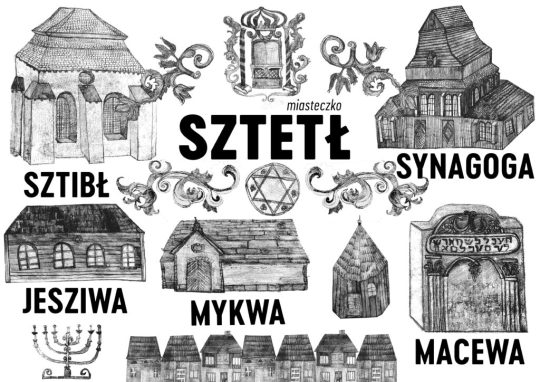
Drawing by Klaudia Kiercz-Długołęcka
Sztetł
Yiddish - שטעטל
English transcription - Shtetl
Meaning - a town
Sztibł
Yiddish - שטיבל
English transcription - Shtibl
Meaning - a house or a room used for communal Jewish prayer
Jesziwa
Yiddish - ישיבֿה
English transcription - Yeshiva
Meaning - a traditional Jewish educational institution focused on the study of the Talmud
Mykwa
Yiddish - מיקווה
English transcription - Mikvah
Meaning - a bath used for the purpose of ritual immersion to achieve ritual purity
Synagoga (this one is in Polish)
Yiddish - שול
English transcription - shul
Meaning - synagogue
Macewa
Yiddish - מצבֿה
English transcription - Matzevah
Meaning - a headstone or tombstone marking a Jewish grave
#jewish#jews#jewish culture#jewish history#yiddish#yiddish culture#yiddish language#learning yiddish#ashkenazi#ashkenazi jews#polish Jews#jews in poland#yiddish words#shtetl#shtibl#yeshiva#mikvah#shul#matzevah#jidysz#yidish#ייִדיש#Żydzi w Polsce#żydowska kultura#judaica#jeśli zapomnę o tobie Jerozolimo niech uschnie moja prawica#yiddish dictionary#jumblr
247 notes
·
View notes
Note
I have probably already asked this, but I want to make it clear: is there really some Ashkenazi supremacy in Israel? Because, according to the info I could find, Ashkenazi makes up only around 30% of the population. As to the discrimination and supremacy, there are contradictive opinions. Thankyou in advance. Shanah tova!
Pre-1948 Zionist politics and the Yishuv were overwhelmingly led by Ashkenazim. They set up most political and social systems in Israel, controlled the governing coalitions and labor unions for the first 30 years, and were gatekeepers for social advancement of any other group. Ashkenazim no longer have either a demographic majority or political control, but social echoes can linger. More here.
In the year 2023, "Ashkenazi supremacy" tends to get invoked as an excuse for voting for violent racist criminals, i.e. "I support the judicial reform law and you Ashkenazi supremacists in Tel Aviv wouldn't understand." I don't really give a shit if someone feels condescended-to by some secular Jew at a tech startup. They need to stop - or be stopped from - turning Israel into Iran.
17 notes
·
View notes
Text
(the answer is no. Elhaik is a joke)
#ashkenazi jews#ashkenazi#ashkenazim#eran elhaik#pseudogenetics#genetics#propaganda#quora#good quora answers
10 notes
·
View notes
Text
Well that's disturbing...
9 notes
·
View notes
Text
Watch "AF-229: Ashkenazi Jewish | Are You Related to Them? | Ancestral Findings Podcast" on YouTube
youtube
#Youtube#ashkenazi jewish#ashkenazim#Ashkenazi#ashkenazi Judaism#jews#Messianic Judaism#Jewish#Ashkenazi jews#Judaism#ancestry#jewish ancestry#Israeli#Israel#israeli ancestry#israel ancestry
3 notes
·
View notes
Text
Forgive me if I’m misunderstanding, but the ‘blood’ shouldn’t matter, right? As it’s more of an Ethnic group as well as religious?
said this in a comment but as a non ashki jew, the way y’all (gentiles) talk abt ashkenazi jews is really fucking weird. you’re not being a savior to non ashkenazi jews or to black and brown jews (some of whom are ashkenazi) by painting ashkenazi jews as this nefarious group of elites plotting against everyone. the antisemitism doesn’t cancel out just because you’re targeting the group you perceive to be the “white ones.”
5K notes
·
View notes
Text


Polin museum of the History of Polish Jews, Warsaw, Poland
#jidysz#jewish culture#jews in poland#yiddish culture#jewish history#israel#am yisrael chai#aliyah#ashkenazi culture#ashkenazi jews#ashkenazi#jews#Jewish#pushke
58 notes
·
View notes

